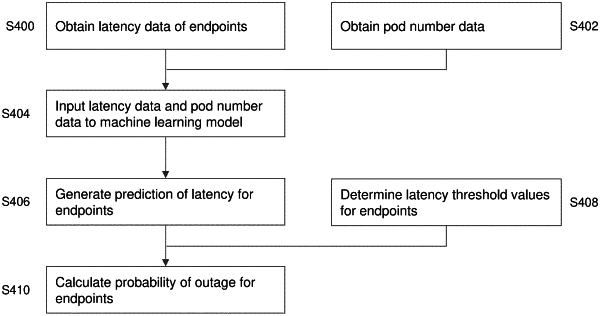| CPC H04L 41/16 (2013.01) [H04L 41/147 (2013.01); H04L 43/0852 (2013.01)] | 6 Claims |

|
1. A method for quality prediction, comprising:
obtaining values of a parameter of a first endpoint;
obtaining values of a parameter of a second endpoint; and
generating a prediction of the parameter of the first endpoint according to the values of the parameter of the first endpoint and the values of the parameter of the second endpoint;
wherein the prediction includes probability distribution information of the parameter of the first endpoint at a timing in the future;
obtaining a virtual space amount allocated to a group of endpoints,
wherein the prediction of the parameter of the first endpoint is generated according to the virtual space amount, and the first endpoint and the second endpoint are included in the group of endpoints;
wherein the virtual space amount is an amount of kubernetes pods corresponding to the group of endpoints and allocated outside a server;
inputting the values of the parameter of the first endpoint, the values of the parameter of the second endpoint and the virtual space amount into a machine learning model configured to generate the prediction of the parameter of the first endpoint,
wherein the machine learning model has been trained with past values of the parameter of the first endpoint, past values of the parameter of the second endpoint and past virtual space amounts;
wherein the machine learning model includes a transformer model configured to extract temporal relationship between the parameter of the first endpoint and the parameter of the second endpoint; and
wherein the machine learning model includes an autoencoder configured to extract noise data, trend data and seasonal data from the values of the parameter of the first endpoint and the values of the parameter of the second endpoint, and an output of the autoencoder is taken as an input of the transformer model.
|